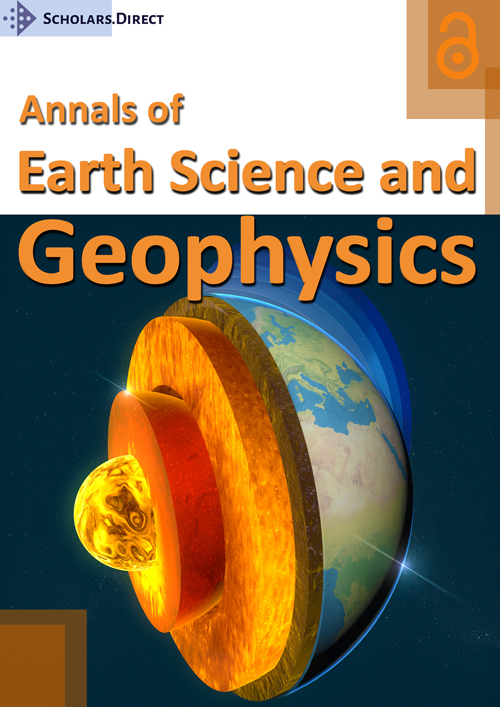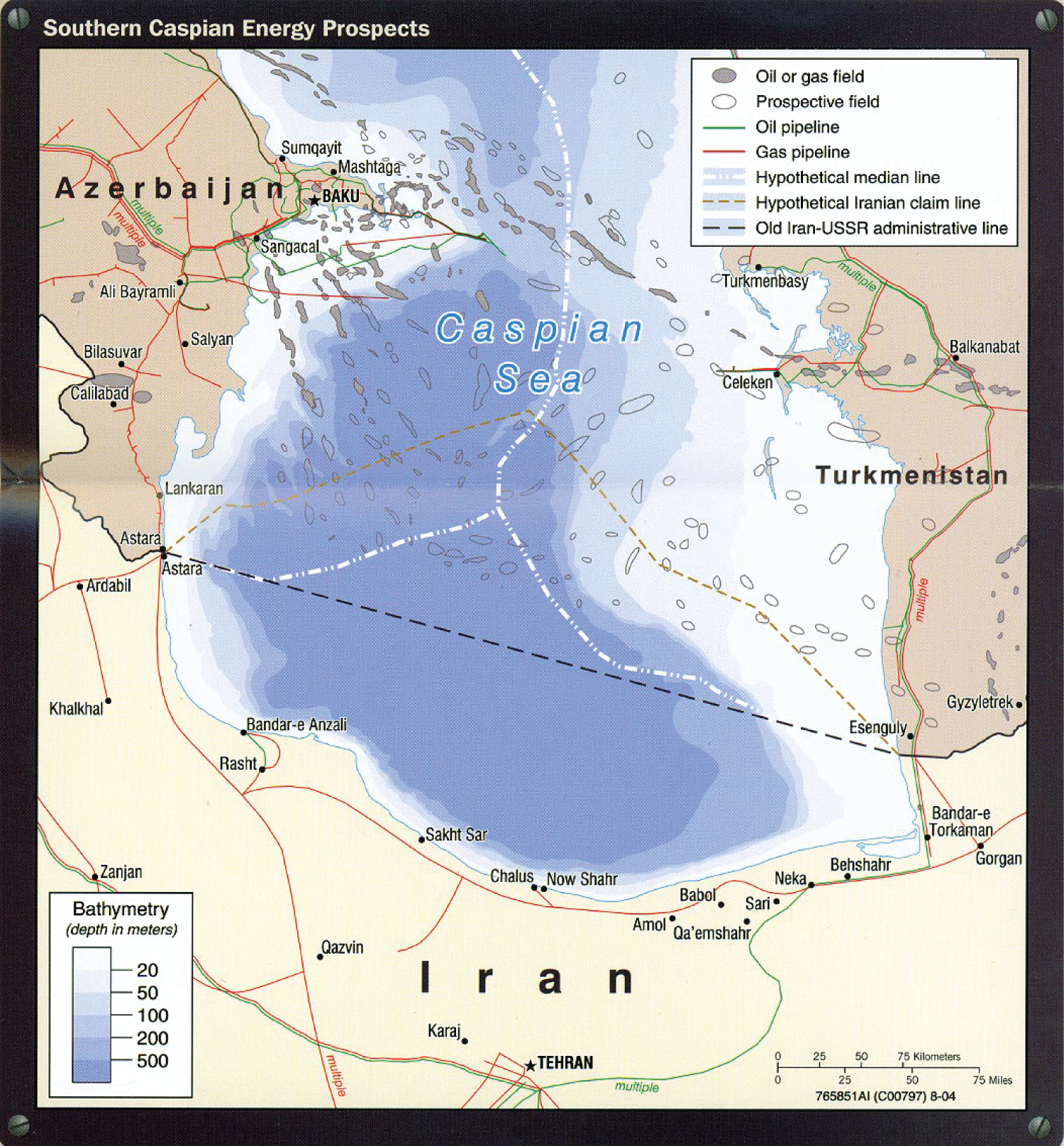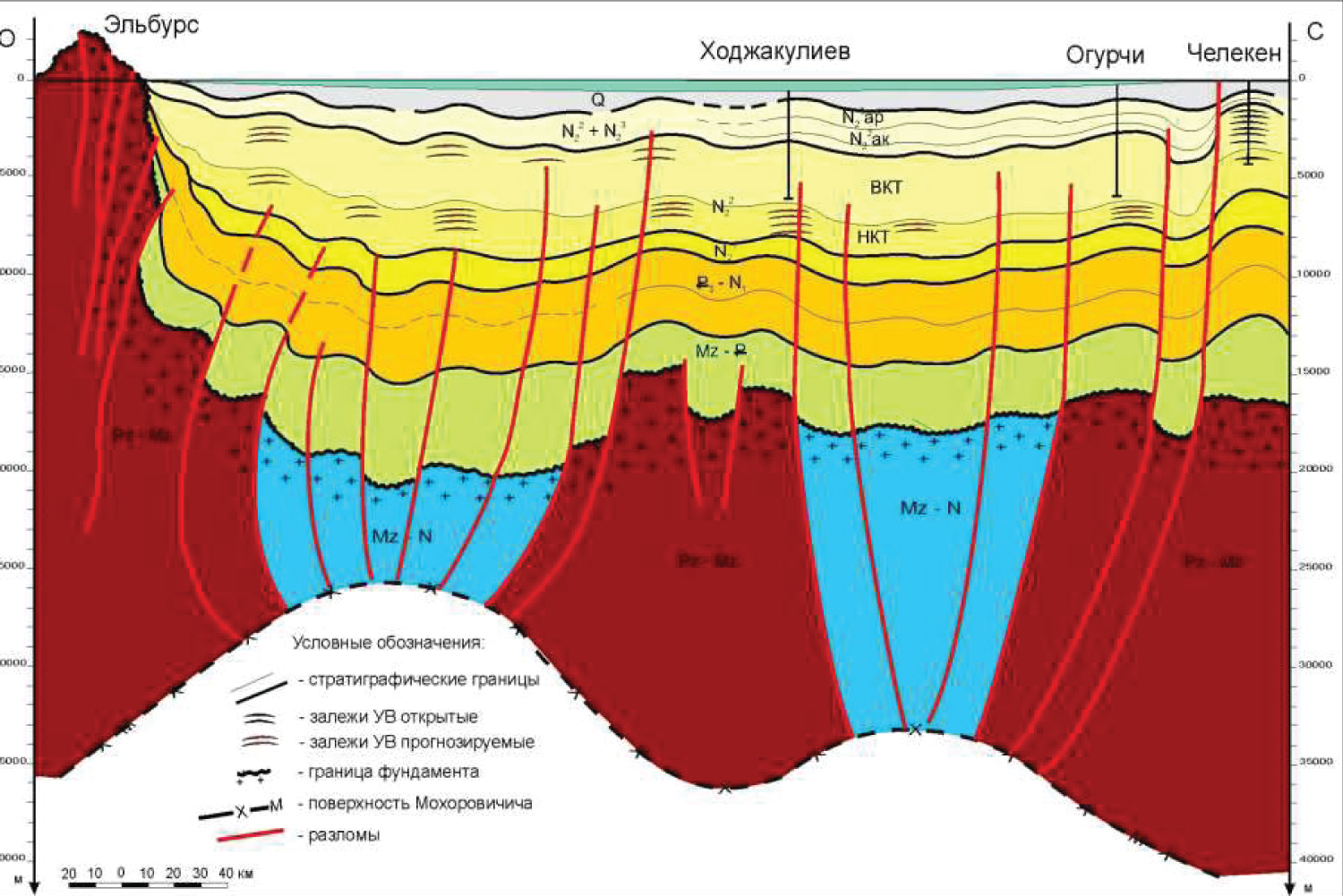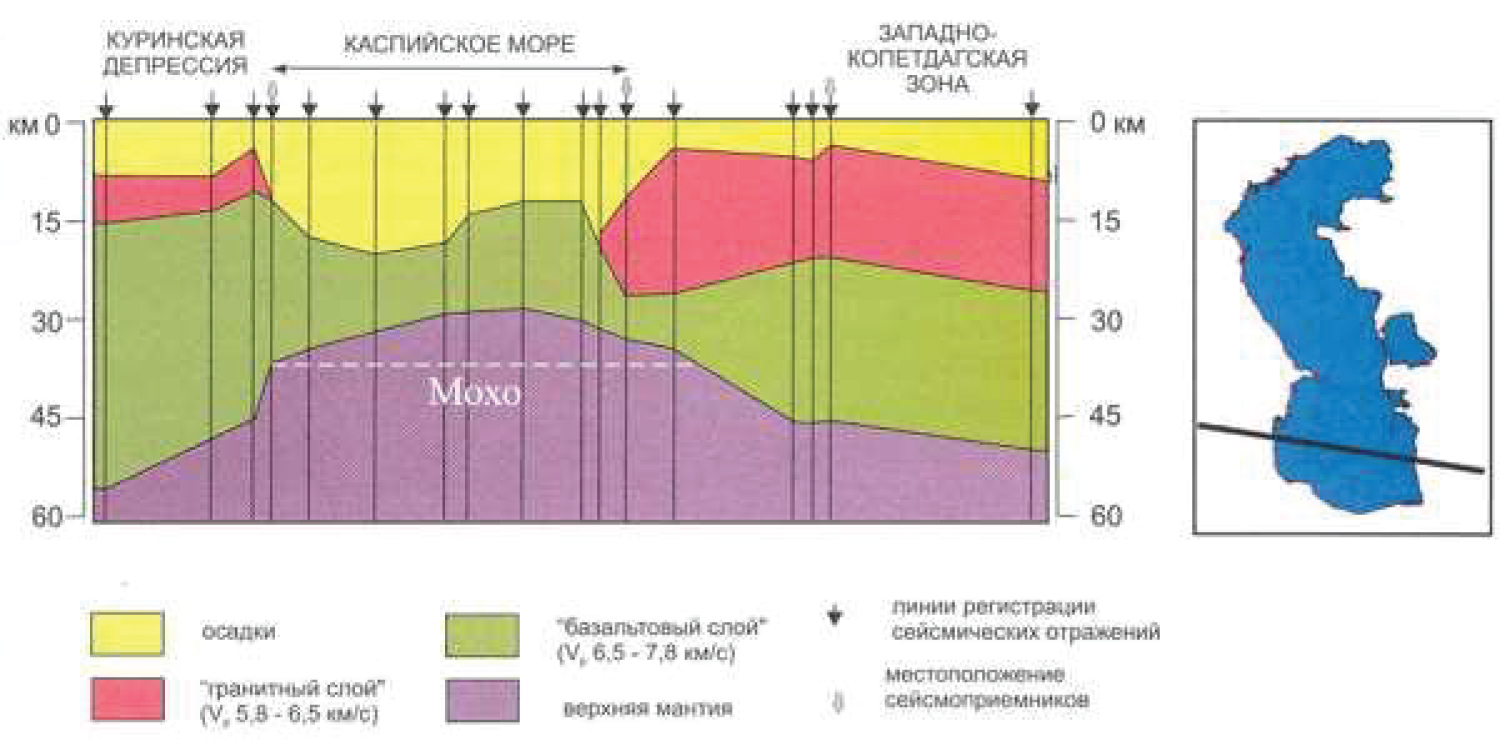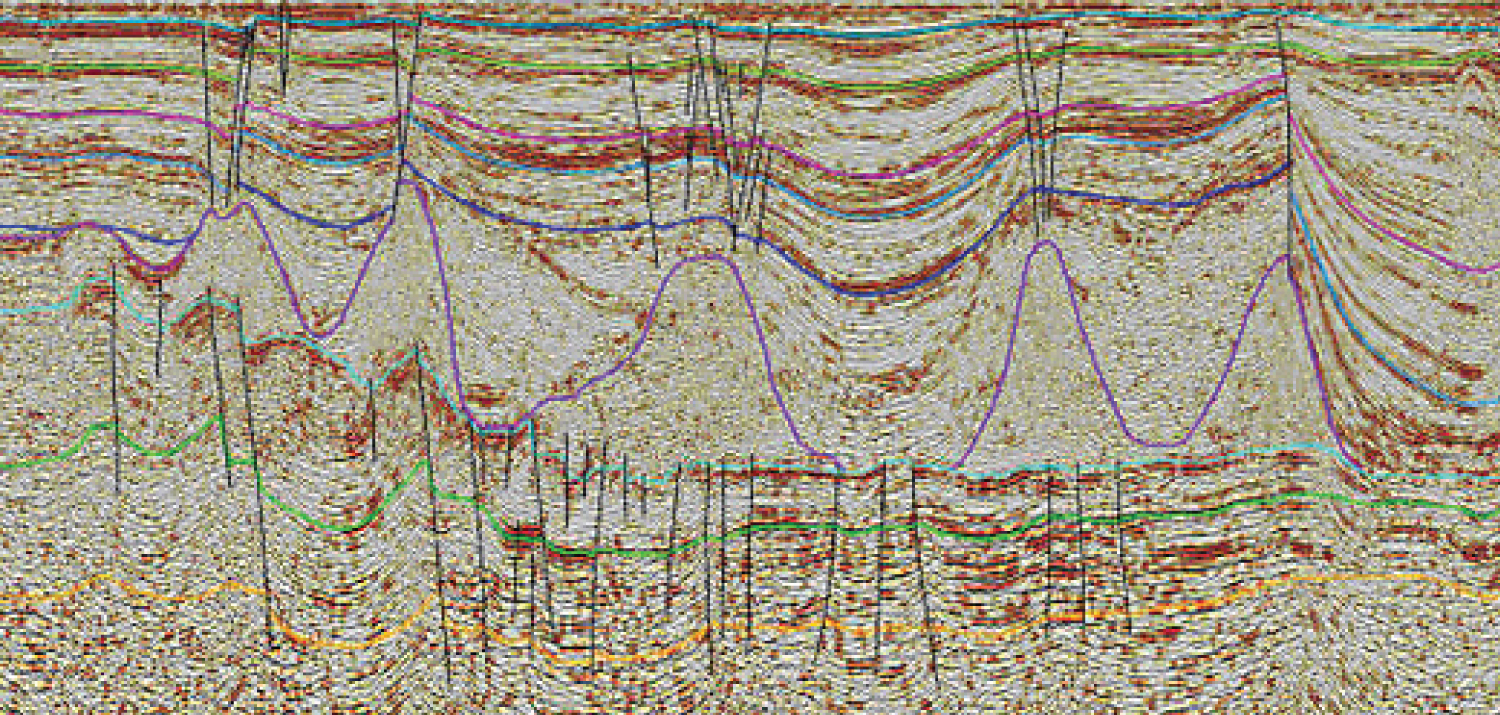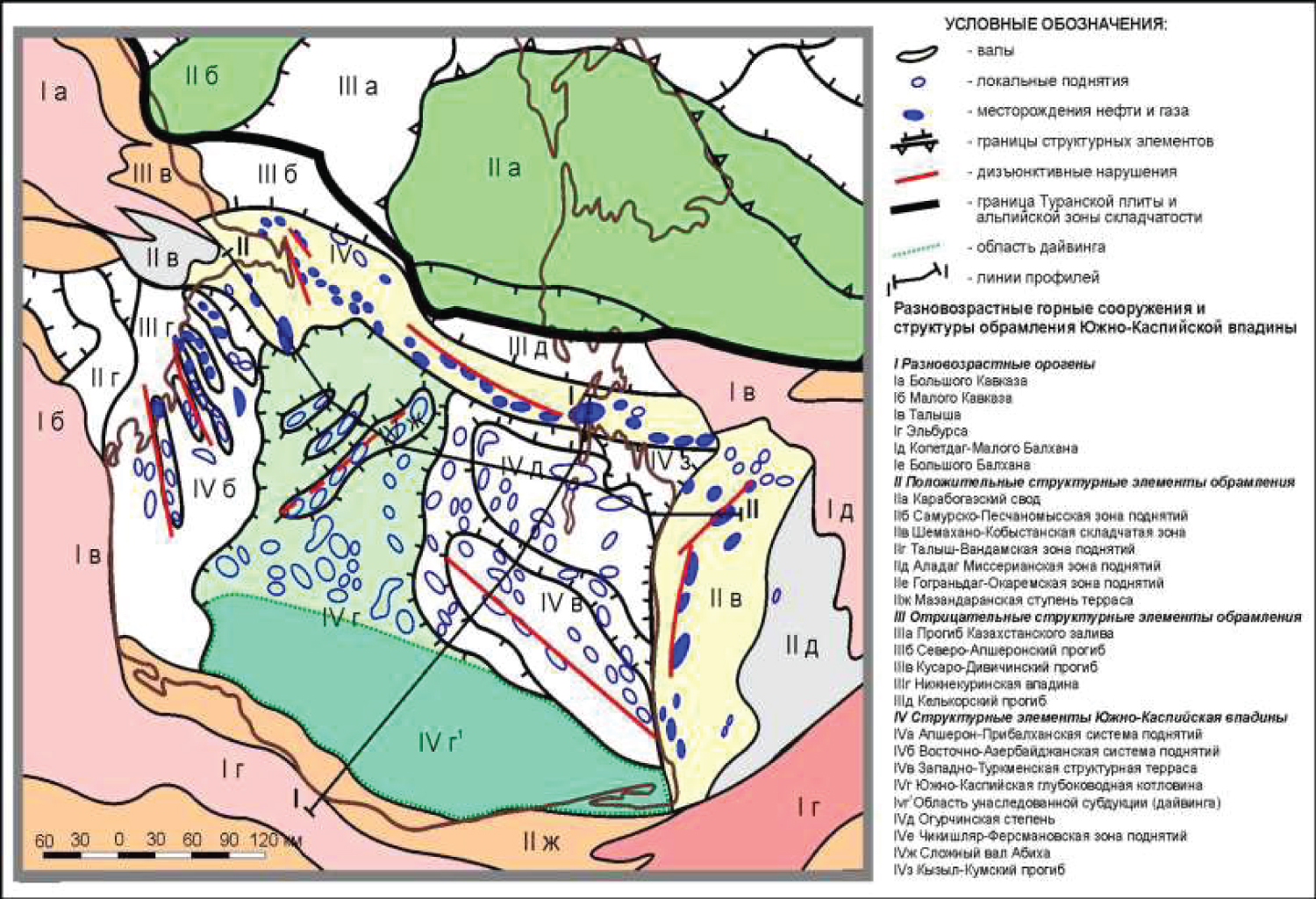South Caspian Basin - West Baluchestan, Middle East: On Alpine Magmatism, Tectonics, Metallogeny and Hydrocarbons (HC- Oil-Gas) Relation: Some Problems and Constraints
We present some materials on this famous region - several structures of the Middle East. Such points could be noted as follows:
1. A very important north-eastern (NE) tectonic - magmatic - metallogenic - Oil-Gas (or hydrocarbons - HC), at least, Miocene (N1) - Recent zoning exists in the region studied [1-3] (metallogeny led by E. Romanko et al). There are no doubts about mantle component important role (known delamination by M. Keskin, 2003 etc. and global African super Plume activity - ex - tomography by Bull, McNamara, Ritsema, 2009 etc.). It controls tectonics, intraplate magmatic, and fluid events etc. Such different zoning effects could be stressed as: Neogene - Recent (N1-Q) intraplate magma due to African superplume activity. Magma products are: subalkaline-alkaline igneous rocks - Ca-rich igneous rocks - up to real Quaternary (Q) carbonatites of Hanneshin, Afghanistan. There are data about Sr, Ca etc. input in upper younger Caspian Sea sediments from the lower older magmatites. There is such magmatic trend as: Quaternary carbonatites, Hanneshin, Helmand block, Afghanistan - Ca-rich volcanites with CaO up to ca. 35% - Ca-rich volcanites with CaO up to 10% - trachyandesites with CaO 7%, W - Baluchestan.
2. Oligocene-Recent (Pg2-Q4) is subduction-related magma-antipode verus intraPlate one. There are some data about warmer subduction-related (trachyAndesites, rhyolites etc.) rocks here, ex., fairly warm melt (up to 1220 °C in non-basalts; H20 up to 9 wt% in Q-rhyolites, Bazman structure) inclusions in them [3].
3. Decreasing of earthquakes activity from the South to the Middle Caspian Sea, at least (Khain, Bogdanov, 2003 etc.). Also, famous Prof V. Khain, et al. in 2003 stressed HC decreasing from South Caspian Sea - to North Caspian Sea.
4. Oil - gas-condensate/gas zoning from the west to the east of the Caspian Sea and N. Persian Gulf. It could be in relation with NE superplume activity meaning such limit as Caucasus barrier, which limits HC moving to the northeast and rotates them to the east (Figure1, Figure 2, Figure 3, Figure 4 and Figure 5).
5. Other HC zoning is as follows: HC in the old rocks, since Devonian up to Paleogene - North Caspian Sea vs. HC in Triassic-Jurassic, Paleogene rocks in the Middle Caspian Sea, and in Low Pliocene (N2) rocks - South Caspian Sea. It could be in agreement with northeastern superplume activity decreasing. Fairly rare coal - HC coexisting could be also in agreement with a long strong degassing in this geo-warm region. It could be proposed that the age of all (or most) Caspian Sea HC is similar or maybe simply one despite regularly older HC-bearing layers to the north, as said above. Also, giant HC resources in Saudi Arabia - Caspian region could be related with the very African superplume activity. Important, that chemical data exist as: 800:1 for nonOrganic carbon vs organic carbon (by Prof Rudenko, MSU,Moscow; also for abiogenic - Prof Pikovsky, et al. MSU, having 1986 successful prognosis for 5 HC-giants in S-America in 30-years). NonOrganic (abiogenic) HC could be related to organic one - uniting of two possibilities (organic matter or OM-recycling by seismologist Rodkin, et al, 2014; Dmitrievsky, et al, 2016) [4].
6. All HC localization is in agreement with a regional general geology - no serious problem to explain a concrete fairly big HC field on the geological map. Deep H2 plus C from sediments give us CH4 without serious problems. Also, deep CO2 and even some CH4 could help in economic oil/gas processes despite MAIN oil genesis is traditional (biogenic one with input of deep fluids etc.).
7. There is a fairly good correlation as detailed structural map - HC (oil) maximum. It is in agreement with a young or very young concrete HC localization despite the any age of host rocks with these HC. Important that: Mud volcanoes - HC - Salt +- fauna? in the Caspian Sea region is ONE system (using also data of known V. Kholodov, et al. Moscow). All-Geo North - South zoning here is principal.
8. More data for discussion etc. are:
• The balance of hydrocarbons in time - a spectacular and important argument, according to (Gold and Held, 1987; Selly 1998, using well-known materials by N.A. Kudryavtsev)
• A mixture of abiogenic and biogenic carbon in vultures (HC yield) of Turkey, shown on the basis of impressive analytics, including the isotopy of carbon and oxygen. Foreign data on abiogenic hydrocarbons in Turkey (the coexistence of non-biogenic and biogenic gases), India, etc. Recent and recent impressive data on Mars, the satellite of Europe (the presence of even ethane), distant planets, and many others. from space agency NASA, USA. However, apparently, there is no one chain of hydrocarbon gases - oil, these are two different branches (for example, Prof. Rudenko, chemical faculty of Moscow State University, etc.), although oil was artificially obtained from gas.
• The association of hydrocarbons with the mantle helium 3 isotope (although B. Polyak, et al. 2013 against a Biogenic genesis). Mixture of mantle helium 3 for mud volcanoes (muds) was established in connection with the active Cenozoic magmatism of the Greater Caucasus by O. Kikvadze, et al. 2016.
• Already banal finding gaseous hydrocarbons (up to butane) on other planets.
• Obtaining amino-acids from inanimate nature - the famous experience of S. Miller, USA, 1951, etc. - a step to the emergence of life on Earth from inorganic compounds.
• A statement of organic compounds on the volcano Tolbachik, et al. Kamchatka - according to E. K. Markhinin and V.V. Chelokov, et al. 1989. Methane output (there is data on ethane) in active volcanoes of Iceland, oil of the modern caldera Uzon, Kamchatka, for example, according to N.L. Dobretsov, et al. 2013 and many others. etc. (although formally opponents of deep oil admit capture of organic oil by magma). Quite numerous materials on underwater hydrocarbons (including abundant gas hydrates) in the oceans, for example, on O. Mazarovich and S. Sokolov, 2010, etc.
• Worldwide and famous works of A.I. Oparin, 1938 and many others. others - about the origin of life etc.
• A substantial number of hydrocarbon deposits in the foundation, according to some data, at least 1/4 of all hydrocarbon deposits, ex. - materials of V. and N. Larin etc.
• Mechanism of the HC cycle and the proximity of the geochemistry of the lower (mainly) crust from the HC of a well-known seismologist, etc. M. Rodkin [4] allows unite' both - abiogenic and biogenic hypotheseis. It is known that the geochemistry of the rare elements of serpentinites (K. Ivanov, et al. 2017 [5] and many others), sometimes of the lower and less often upper crust, has something in common with the geochemistry of oils. Purely abiogenic theory is not recognized by many major oil specialists. There are arguments for biogenic factor, but provoked by the often-known deep degassing (including the important hydrogen (H2), faults (which are known from the genius chemist D.I. Mendeleev ! etc.).
9. Of course, constructive criticism of the biogenic HC specialists is still very wanted. According to them, the following points remain problematic for the aBiogenic genesis, as (20 - 25 points):
There are purely biogenic HC-fields and peposits, there is no doubt about their origin.
Bio-markers are still a serious argument for biogenic HC despite discussion.
10. Materials of school of Prof. Vassoevich, MSU, et al. - while known Gold, et al. 1987 (abiogenic HC genesis) is not very accepted etc.
11. Volcano is able to throw away products with trapped organics. Organics in connection with volcanoes are formed, they say, extremely quickly.
12. HC recycling by known seismologist M. Rodkin, 2015 etc. (using Mesozoic - modern subduction while PZ one is not quite accessed) decrease maybe contradiction between bio- and non Bio HC genesis [4].
13. Polymerization of methane until oil - is nonequilibrium and released only with catalysts. Oil has not yet been discovered on the planets, the role of organisms in the sedimentary cover is apparently significant.
14. Joint geo-analysis is of very importance, surely. It could help us with HC (oil...) and even in non-HC problems. Different HC young? zoning is in agreement with a young and mobilized' oil / HC fields. Oil fields age is maybe no more than 1 million-year-old and gas age is ca. Q4, due to deep oil conference: A.Timurziev et al., R.Seyful-Mulukov, A. and S. Marakushev, 2014-2019 [6-15] etc.
Authors Declaration
We are very grateful for the W-Baluchestan field to outstanding regional trio - Drs A. Houshmandzadeh, M.A.A. Nogole-Sadat (deceased), and E.LN. Romanko (deceased); also - to D. Astafiev, A. Kouzin, B. Golubov (deceased), M. Goncharov (deceased), et al., G. Gogonenkov, et al., Yu. Volozh, V. Bykadorov, M. Antipov, V. Trifonov, Yu. Leonov (deceased), V. Slavinsky, A. Kasimov, M. Hosseini et al.; also to the Lomonosov MSU for their known EAGE and other HC (oil-gas) lectures. Many our cordial thanks to the many geo-specialists for long discussions, consultations and help.
References
- Astafiev DA (2010) The role of the planetary magma-fluid-dynamic system of the Earth in tectonics, basin and oil-genesis. Earth degassing: Geotectonics, geodynamics, geofluids, oil and gas, hydrocarbons and life. Materials of the All-Russian Conference with international participation dedicated to the 100th anniversary of the birth of P.N. Kropotkin. Moscow. Russia, 39-43.
- Kuzin AM (2011) Spatial-phase localization of hydrocarbon deposits and mapping of the convergence of fluidization processes in the geological environment according to seismic data. Collected works degassing the Earth and the genesis of oil fields. On the centenary of the birth of P.N. Kropotkin. Russian, 276-301.
- Romanko A, Imamverdiyev NA, Prokofiev V, et al. (2018) Some new and previous materials on alpine magmatism, tectonics, melt and fluid inclusions, and metallogeny in Eastern Iran. Journal of Mining Sciences 4: 11-28.
- Rodkin MV, Rukavishnikova TA (2015) The center of oil formation as a nonequilibrium dynamic system - model and comparison with empirical data, Geology of oil and gas. Russia, 65-70.
- Timurziev AI, Gogonenkov G, Kashik A (2005) Geodynamics and oil content of horizontal strike-slip fault structures (by Example of Western Siberia) - 67 EAGE Conference & Exhibition.
- Galimov EM, Kamaleeva AI (2015) The source of hydrocarbons from the super-giant Romashkino oil field (Tatarstan) is an influx from the crystalline basement or oil source sedimentary deposits? Geochemistry International, Russia, 103-
- Kudryavtsev NA (1973) The genesis of oil. Russian
- Letnikov FA (1977) The fluid regime of the earth’s crust and upper mantle. Russia 216.
- Marakushev AA, Marakushev SA (2008) The formation of oil and gas fields. Lithology and mineral deposits 505-521.
- Seyful-Mulyukov RB (2012) Oil and gas: Nature and their practical significance. fundamental book), Torus press. Russia, 216.
- Syvorotkin V, Zaitsev V (2015) About some results of the Hydrogene (H2) survey of the Abdrakhmanov area, Romashkin oil giant field, Tatarstan. 4 Kudryavtsev readings on deep oil. M: CGE.
- http://journal.deepoil.ru/images/stories/docs/DO-1-12-2013/9_Timurziev_1-12-2013.pdf.
- Fedonkin MA (2008) The role of hydrogen and metals in the formation and evolution of metabolic systems. In: Problems of the origin and evolution of the biosphere. 417-437.
- Marakushev AA, Marakushev SA (2010) Fluid evolution of the earth and origin of the biosphere. In: Man and the geosphere. Chapter 1, Florinsky ( 4th edn), Nova Science Publishers, New York, 385: 3-31.
- Marakushev SA, Belonogova OV (2013) The Emergence of Bioenergetics: The Formation of a Gluconeogenesis System and Reductive Pentose Phosphate pathway of CO 2 Fixation in Ancient Hydrothermal Systems. Orig Life Evol Biosph 43: 263-281.
Corresponding Author
A Romanko, Geological Institute, RAS, Moscow, Russian Federation, Russia
Copyright
© 2022 Romanko A, et al. This is an open-access article distributed under the terms of the Creative Commons Attribution License, which permits unrestricted use, distribution, and reproduction in any medium, provided the original author and source are credited.

